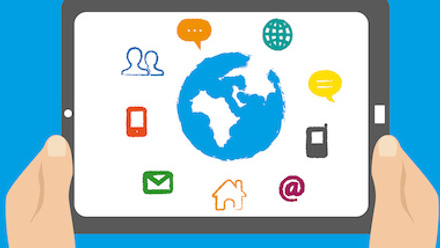The role of connectivity in digital technology when it comes to insurance
With sales of individual protection insurance dwindling, the need for employers to play a role in getting important life and disability insurance to the wider population, especially in light of reducing state benefits, has never been greater.

To do this, products need to look and feel better and provide a level of every day usefulness for insurance to start meaning something to employers and employees alike. That’s where technology has a role to play.
The use of digital tech in insurance products is becoming commonplace and is certainly here to stay, but it’s those that provide true connectivity that will offer the most value for employers and employees.
Free digital stuff
A number of insurers are now offering free digital stuff that adds some aspect of every day usefulness. Whether that’s a health app, an apple watch, a fitness band, a virtual GP or online absence management, these techniques can be effective in making products more attractive.
We can expect the trend of bundling insurance products with technology to continue, as insurers help employers reach goals beyond simply providing an employee benefit and add everyday value for their employees. The insurance may not been seen every day, but it’s there when it’s needed.
Free digital stuff is good, and if employers are confident it will help them or their employees, they should welcome it. But unless it’s truly connected, it does come at a cost.
True connectivity
Connectivity in this sense means that the technology being used is fully embedded into the insurance product. Crucially, it not only helps attract new customers, but it also helps to reduce the cost of supply or lower insurance premiums in other words. A win-win situation for both customers and insurers.
Throwing in a freebie such as a fitness band makes insurance look more attractive, but that doesn’t impact the cost of the insurance (yet). Wearable data is not yet reliable enough to have any meaningful impact on insurance premiums, especially for groups where it is difficult to get all employees engaged enough to provide meaningful data that predicts life and disability risk.
Connected insurance does both. A sick pay insurance product can be one such example of a connected product, if it incorporates online absence management which can provide useful everyday value for employers.
This also means the absence data that is collected is integrated with case management so that the insurer can monitor ongoing absences and intervene proactively to provide support to an employee to help them back to work.
Acting early is proven to reduce the length of claims, which means that insurers are able to reduce the cost of the insurance for the customers who use it. So in this case the technology is connected with the insurance to reduce the cost of the insurance as well as provide more everyday value for customers.
The black box in your car is another similar example, and in fact is one step further as the insurance is priced individually based on the data collected. In life and health insurance we are not quite there yet.
Connectivity also means that the technology and insurance need to be bundled together by the insurer to create the links and integrations needed. Larger employers who have a tendency to seek bespoke, unbundled products may miss out on the benefits of connectivity.
Why is this useful for employers buying insurance?
If it’s not connected, it is a cost. Is free stuff really free? If it doesn’t allow the insurer to reduce their costs then arguably not.
Such products can still be valuable to employers though, but they must carefully appraise the appetite for and value of the technology either for them or their employees, knowing that they will be paying at least something for it.
So if you already have some freebies included within your insurance package, take another look and make sure you are using them to their fullest potential. If you are in the process of buying insurance, consider the value these add-ons will have and appraise them fully.
And look out for the connected products. It’s early days, but slowly they will become more commonplace as our insurance products become less abstract and increasingly connected and intertwined with our everyday lives.
Chris Morgan is distribution partnerships manager at Ellipse.
This article was provided by Ellipse.






